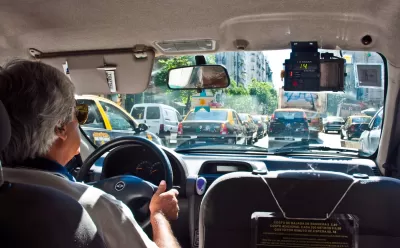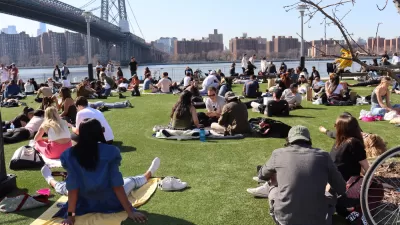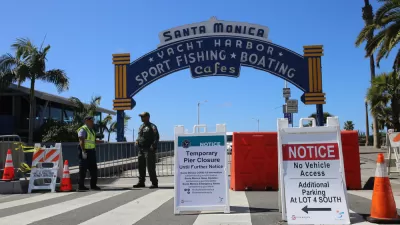Research suggests maximizing airflow during shared car rides vastly reduces the risk of transmission.

As public health officials warned of the dangers of congregating in enclosed spaces during the COVID-19 pandemic, Americans took refuge in one of our favorite private spaces: cars. Although traveling by car may put you at lower risk of transmission than, say, a crowded bus, private vehicles still carry their own risks of infection, reports Emily Anthes. "They are small, tightly sealed spaces that make social distancing impossible and trap the tiny, airborne particles, or aerosols, that can transmit the coronavirus."
A new study maps the patterns of airflow inside a car and suggests that "opening certain windows can create air currents that could help keep both riders and drivers safe from infectious diseases."
"Unsurprisingly, they found that the ventilation rate was lowest when all four windows were closed. In this scenario, roughly 8 to 10 percent of aerosols exhaled by one of the car’s occupants could reach the other person, the simulation suggested. When all the windows were completely open, on the other hand, ventilation rates soared, and the influx of fresh air flushed many of the airborne particles out of the car; just 0.2 to 2 percent of the simulated aerosols traveled between driver and passenger."
When opening all the windows isn't an option, the study's authors recommend opening the windows opposite each occupant to create the most effective air flow.
FULL STORY: How to (Literally) Drive the Coronavirus Away

Alabama: Trump Terminates Settlements for Black Communities Harmed By Raw Sewage
Trump deemed the landmark civil rights agreement “illegal DEI and environmental justice policy.”

Planetizen Federal Action Tracker
A weekly monitor of how Trump’s orders and actions are impacting planners and planning in America.

Why Should We Subsidize Public Transportation?
Many public transit agencies face financial stress due to rising costs, declining fare revenue, and declining subsidies. Transit advocates must provide a strong business case for increasing public transit funding.

Understanding Road Diets
An explainer from Momentum highlights the advantages of reducing vehicle lanes in favor of more bike, transit, and pedestrian infrastructure.

New California Law Regulates Warehouse Pollution
A new law tightens building and emissions regulations for large distribution warehouses to mitigate air pollution and traffic in surrounding communities.

Phoenix Announces Opening Date for Light Rail Extension
The South Central extension will connect South Phoenix to downtown and other major hubs starting on June 7.
Urban Design for Planners 1: Software Tools
This six-course series explores essential urban design concepts using open source software and equips planners with the tools they need to participate fully in the urban design process.
Planning for Universal Design
Learn the tools for implementing Universal Design in planning regulations.
Caltrans
Smith Gee Studio
Institute for Housing and Urban Development Studies (IHS)
City of Grandview
Harvard GSD Executive Education
Toledo-Lucas County Plan Commissions
Salt Lake City
NYU Wagner Graduate School of Public Service





























